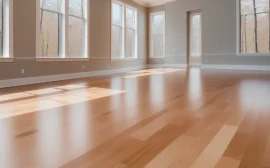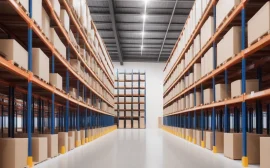he hardwood flooring industry is experiencing a technological revolution. Traditional manual inspection methods, while effective, are time-consuming, subjective, and prone to human error. Enter artificial intelligence and deep learning—specifically TensorFlow models that can detect floor defects with remarkable accuracy and consistency.
In this comprehensive guide, we’ll explore how to train TensorFlow models to automatically identify common hardwood floor defects including scratches, dents, discoloration, finish damage, and structural issues. Whether you’re a flooring contractor looking to streamline quality control, a manufacturer seeking automated inspection systems, or a tech enthusiast interested in computer vision applications, this article will provide actionable insights and practical implementation strategies.
Why Use TensorFlow for Hardwood Floor Defect Detection?
TensorFlow, developed by Google, has become the industry standard for machine learning and deep learning applications. For hardwood floor inspection, TensorFlow offers several compelling advantages:
Consistency and Objectivity: Unlike human inspectors who may have varying standards or experience fatigue, AI models apply the same criteria uniformly across thousands of inspections. This consistency is invaluable for quality control in manufacturing environments or large-scale installation projects.
Speed and Scalability: A trained TensorFlow model can analyze floor images in milliseconds, inspecting hundreds or thousands of square feet worth of flooring imagery in the time it would take a human to examine a single room. This scalability makes AI-powered inspection economically viable for projects of any size.
Cost Reduction: While initial model development requires investment, automated inspection systems dramatically reduce long-term labor costs. One study in manufacturing quality control showed AI inspection systems reduced inspection costs by up to 60% while improving defect detection rates.
24/7 Operation: Automated systems can operate continuously without breaks, enabling round-the-clock quality monitoring in manufacturing facilities or real-time inspection on active job sites through mobile applications.
Data-Driven Insights: Beyond simple pass/fail assessments, machine learning models provide quantitative data about defect types, frequencies, and patterns. This information helps manufacturers identify production issues and installers recognize common installation problems.
Understanding Computer Vision for Floor Inspection
Before diving into TensorFlow implementation, it’s essential to understand how computer vision enables automated floor inspection.
The Fundamentals of Image-Based Defect Detection
Computer vision systems “see” images as matrices of numerical values representing pixel intensities. For color images, each pixel contains three values (Red, Green, Blue channels), while grayscale images use single intensity values. When examining hardwood floors, the model learns to recognize patterns in these pixel values that correspond to defects.
Feature Learning: Convolutional Neural Networks (CNNs), the backbone of modern computer vision, automatically learn hierarchical features from training data. Early layers detect simple patterns like edges and textures, while deeper layers recognize complex features like specific defect types or wood grain patterns.
Texture Analysis: Hardwood floors have distinctive grain patterns and textures. CNN models excel at texture analysis, distinguishing between normal wood grain variations and actual defects like scratches or finish inconsistencies.
Transfer Learning Advantages: Rather than training models from scratch, practitioners can leverage pre-trained models like MobileNet, ResNet, or EfficientNet. These models, trained on millions of images, already understand fundamental visual concepts, requiring only fine-tuning for floor-specific defect detection.
Common Floor Defects and Their Visual Signatures
Different defects present unique visual characteristics that machine learning models can learn to identify:
Surface Scratches: Appear as linear marks, often with different reflective properties than surrounding wood. Deep scratches may show color differences where underlayers are exposed.
Dents and Gouges: Create shadows and depth variations detectable through lighting analysis. These defects often have irregular shapes with depressed centers.
Discoloration: Manifests as color inconsistencies that deviate from expected wood tones. UV damage, water stains, and chemical reactions each produce characteristic color patterns.
Finish Defects: Include bubbling, peeling, or uneven coating application. These often show as texture irregularities or abnormal light reflection patterns.
Gap and Separation Issues: Detectable as dark lines or spaces between planks, often with consistent widths that differ from natural wood grain.
Structural Damage: Includes warping, cupping, or buckling, visible through changes in planarity and shadow patterns that indicate three-dimensional deformation.
Setting Up Your TensorFlow Environment for Floor Inspection
Required Tools and Libraries
To begin training TensorFlow models for floor defect detection, you’ll need a properly configured development environment:
Python 3.8 or Higher: TensorFlow requires modern Python versions for optimal performance and compatibility.
TensorFlow 2.x: The latest TensorFlow version offers eager execution, Keras integration, and improved API consistency. Install with: pip install tensorflow
Essential Supporting Libraries:
- NumPy for numerical operations and array manipulation
- OpenCV (cv2) for image preprocessing and augmentation
- Matplotlib for visualization and result analysis
- Pillow (PIL) for additional image handling capabilities
- scikit-learn for dataset splitting and evaluation metrics
Hardware Considerations: While TensorFlow can train models on CPUs, GPU acceleration dramatically reduces training time. NVIDIA GPUs with CUDA support are recommended for serious projects. Cloud platforms like Google Colab offer free GPU access for experimentation.
Dataset Preparation: The Foundation of Success
The quality of your training data directly determines model performance. For hardwood floor defect detection:
Image Collection Strategy: Gather diverse images representing various floor types, lighting conditions, defect severities, and camera angles. Aim for at least 500-1000 images per defect category for robust training, though transfer learning can work with fewer examples.
Annotation and Labeling: Each image must be labeled with its defect type. For classification tasks, simple category labels suffice. Object detection tasks require bounding boxes around each defect, while semantic segmentation demands pixel-level annotations.
Dataset Organization: Structure your data systematically:


